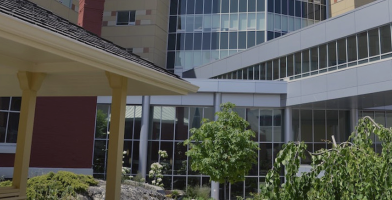Overcoming the challenges of distributed working #1
Hematology laboratories are under increasing pressure to do more with less. To alleviate this stress and guarantee a consistent, efficient, high-quality service across their entire network, Dr. Brian Berry of the Vancouver Island Health Authority, Canada, turned to Digital Cell Morphology.

Quickly producing consistent, accurate results is the aim for any hematology professional. Every blood sample must be handled with competence and care to ensure that clinicians—and, in turn, patients—get the high-quality services they need.
However, with heavy workloads, staff shortages and distributed teams, laboratories are facing many sizeable hurdles. These challenges are all too familiar to Dr. Brian Berry. Brian is Division Head of Hematopathology for the Vancouver Island Health Authority (VIHA), a hub-and-spoke laboratory network comprising 3 metropolitan ‘hubs’ and 8 small community ‘spokes' across Vancouver Island, Canada.
“Our region is very spread out,” says Dr. Berry. “Our Health Authority spans a very large geographic area with 15 hospitals, 13 of which have laboratories, and it takes six or seven hours to drive from tip to tip. We have hospitals at either end and scattered through the middle.”
A new approach to differentials
Dr. Berry wanted to provide top-quality services to clinicians and patients across their network, regardless of location. So, they explored how they could better tie all their locations together, to improve efficiency and speed up collaboration across sites.
“Our vision is to bring the island closer together with technology”, says Dr. Berry. “We want patients living all across the island and in remote communities to have access to the same quality and standard of care: not just those in the larger centers.”
The first step in creating such a network was to find a way to connect VIHA’s larger hubs—so Dr. Berry searched for the right solution. They found it in digital cell morphology (DCM), and installed CellaVision systems at three of their metropolitan sites. This technology automates much of the cell analysis and review process; instead of a technician examining a slide under a microscope, CellaVision automatically scans and images a given slide before pre-classifying cells for manual review.
Bringing the ‘wow’ factor
CellaVision brought a whole new way of working to VIHA. “It’s quite revolutionary,” says Dr. Berry. “It’s a big step forward. As soon as you see it, you’re just wowed.”
The DCM technology connected the hub sites, streamlining various disparate workflows into one digitized process and making the entire review procedure more efficient. Technicians were able to not only process blood counts and slide reviews faster, but to collaborate at a distance to ensure that their results were accurate. They could also access cell morphology data immediately, either on site or remotely, around the clock.
“The technology allows us to share knowledge across our Health Authority, as opposed to it being tied to specific location” enthuses Dr. Brian.
The rapid delivery of results directly benefits real people, especially in scenarios where quick diagnostics are essential for treatment. When samples come in from the emergency room, for instance, these cases can be flagged, prioritized and performed in mere minutes.
“We’ve had cases of patients with potentially lethal illnesses that need immediate treatment being handled after-hours in the middle of the night with DCM,” Dr. Berry explains. “Instead of waiting until someone came in the next day to review the sample, it was taken care of in a matter of minutes because of our remote access to the technology. We made the diagnosis immediately.”
Stay tuned for part #2.
News
Overcoming the challenges of distributed working #3
Expertise on tap Like so many small laboratories, VIHA’s more remote spoke sites found it difficult...

Overcoming the challenges of distributed working #2
Confident, consistent, competent Alongside fast, remote access to data and expertise, the...

Future-proofing hematology laboratories with Digital Cell Morphology #2
Learning by doing—digitally Region Skåne use their DCM systems and CellaVision Proficiency Software...
